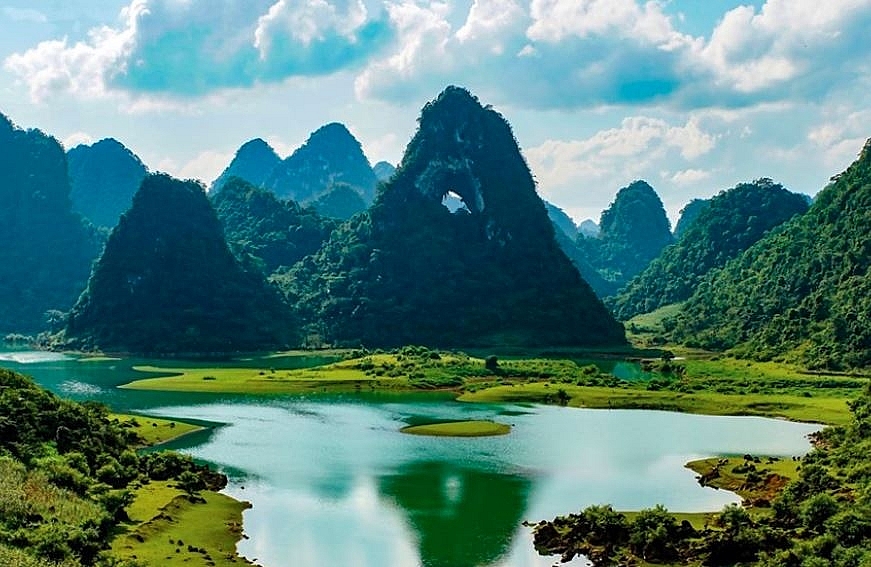 |
| Non nuoc Cao Bang Geopark |
Located in the northern and eastern districts of Cao Bang Province in Northeast Viet Nam, Non nuoc Cao Bang UNESCO Global Geopark covers a total area of 3,000 km2. Mountainous landforms cover approximately 90% of the land area, with elevations ranging from 1,500 to 2,000 m in the west-northwest to 200 m in the east-southeast. With a highland tropical monsoon climate and two distinct wet and dry seasons, the Geopark exhibits a rich biodiversity, with widespread forests, endemic faunas and floras, herbs, specialty crops etc. The region has a complex drainage network that includes 5 major river systems and 47 lakes.
Non nuoc Cao Bang UNESCO Global Geopark is divided into two distinctive parts by the Cao Bang-Tien Yen deep-seated active fault.
The eastern part of the Geopark is mostly composed of limestone. This demonstrates a complete tropical karst evolution cycle with various classic landforms e.g. peak-cluster depressions, cones and towers, old and active caves with magnificent speleothems, closed and interconnected valleys, underground and surface rivers including a ‘turlough’ lake system, and one of the world’s largest waterfalls located on an international border.
The western part features sedimentary rocks, pillow basalts, ultra-mafic and granitic intrusions rich in minerals and hydrothermal alterations. The area also reveals sedimentary rocks dating back more than 500 million years, with stereotype cross-sections, and fossils indicating different paleo-environments and biosphere extinction events.
The diversity in rocks (stratigraphy, paleontology, paleo environment, petrology, mineralogy etc.) and landforms (tectonics, geomorphology, karst, weathering, soil erosion etc.) are evidence of the geodiversity of the area, each with its own characteristic of different evolutionary stages of the Earth’s crust.
 |
| Ban Gioc Waterfall |
 |
| Thung Phja Piot mountain in Cao Bang |



